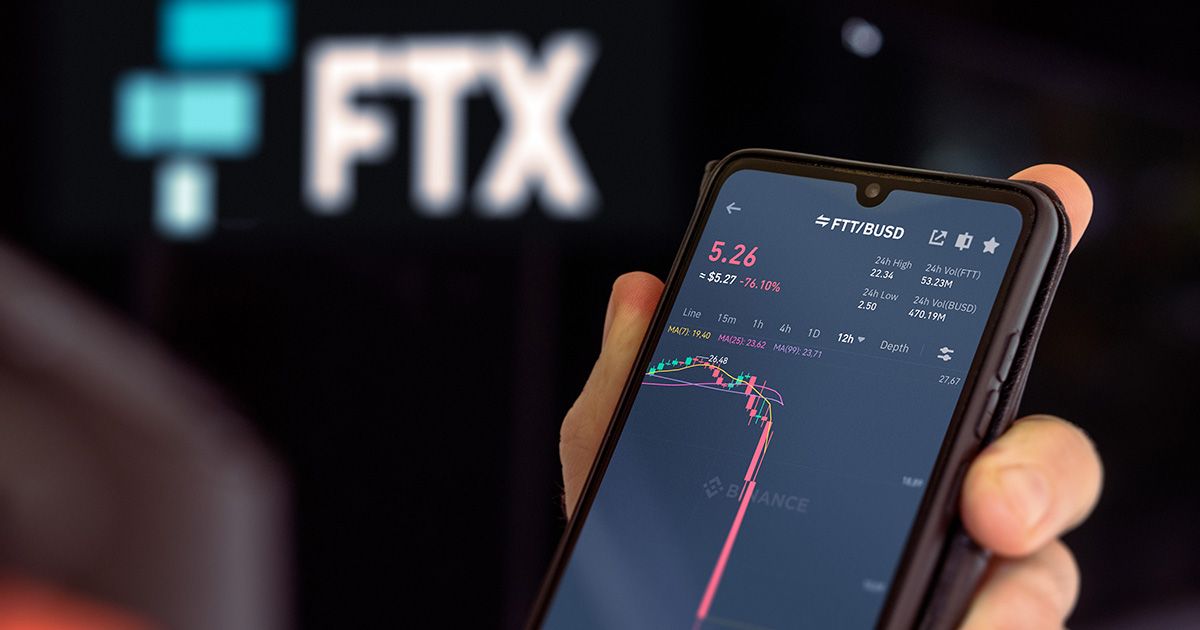Crypto Carnage, the Sequel

Disclaimer: Your capital is at risk. This is not investment advice.
Oh dear. It’s all gone pear-shaped again in cryptoworld, and it looks like the same old story: balance sheet illusion. The collapse of FTX is a shock, but the tremors are unlikely to be of the seismic magnitude of the collapse of LUNA earlier in the year. In fact, it’s probably a delayed victim of that same episode, and perhaps there will be others. However, crypto’s great virtue in its brief existence has been its “anti-fragility” and its ability to learn from its mistakes and become stronger as a result.
This episode stars two of the big beasts of the space: Changpeng Zhao (CZ) of Binance and Sam Bankman-Fried (SBF) of FTX. Binance and FTX are very large crypto exchanges.
The Story, In Brief
News started breaking on 2 November that the two parts of SBF’s empire - FTX (the exchange) and Alameda Research (hedge fund/trading arm) - weren’t as separate as advertised. This was exposed by CoinDesk, an online news site, which got its hands on Alameda’s balance sheet. This showed that Alameda’s largest asset was the token for the FTX exchange, FTT, worth around US$3.86bn out of US$14.6bn in total assets. Not only that, but the third largest asset was US$2.16bn of “FTT collateral”. So a huge component of the balance sheet, but what’s important here is the quality of the asset. Not only was half the balance sheet from their own centralised entity, but it was in a token whose intrinsic value is almost impossible to calculate (and has minimal intrinsic utility).
When I said that the episode might be connected to the Luna collapse earlier in the year, it has been speculated that Alameda shored up its balance sheet with FTT tokens to avoid the fate of 3AC, but has now been undone by the leaking of its balance sheet. How else to explain its fragility?
On the back of the leak, CZ tweeted that he/Binance would be selling its entire holding in FTT. This undermined any confidence in the value of the FTT token and, by extension, the solvency of the Alameda Fund. This precipitated the usual flurry of tweets from Alameda about the quality of their balance sheet, but, as per Walter Bagehot, “Every banker knows that if he has to prove that he is worthy of credit, however good may be his arguments, in fact his credit is gone.”
SBF folded almost immediately, and what had been initially portrayed as a spat between whales quickly evolved into Binance declaring a Letter of Intent to buy FTX. Whether he follows through or not, it’s a masterstroke (albeit probably unintentional) from CZ, as he removes one of his main competitors in the space either by acquiring it for not much or pinching its customers.
The Lesson
The central problem we face in understanding the systemic impact is that we don’t know the full details of the Alameda balance sheet. There are question marks over the quality and value of US$3.37bn of “crypto held”, for example. Among the US$8bn of liabilities, the articlestates that they are “…dominated by US$7.4bn of loans”. Given the collapse in FTT’s price, down 81% since Sunday 5 November, and the damage done to crypto prices elsewhere, things don’t look great for Alameda. Anyway, in time-honoured crypto style, it was a “sell-first, ask questions later” situation and the markets went into meltdown last night, with investors fleeing exchanges as rapidly as possible, fuelling worries about exchange solvency, fuelling more panic, etc.
There are obviously the usual questions about transparency, leverage, risk-management, and hubris that need to be addressed, not just in this case but systematically. It was good to see CZ tweetyesterday, “All exchanges should do merkle-tree proof-of-reserves”, in acknowledgement of this point. It is one of the great ironies of crypto that it criticises the world of traditional finance for its lack of transparency yet displays the same failings itself (hence our enthusiasm for decentralised exchanges). Furthermore, we should learn to be ultra-wary of big personalities in this space (CZ included, although, like Vitalik Buterin, he seems to be more driven by doing the right thing to further the crypto dream rather than piling up his personal wealth).
Perhaps all is not lost, though. First, like all previous disasters, this is another step on crypto’s learning curve. In its short life, it has demonstrated all the traits of anti-fragility; what hasn’t killed it has made it stronger. Secondly, SBF might have blown himself up, but there’s little argument that FTX is a high-quality exchange, and although their clients and investors will have lost money, there’s little to suggest further contagion beyond this clearing period. Even if Binance doesn’t want to buy FTX, one might expect a buyer from somewhere, assuming various contingent liabilities can be disentangled. According to research from Galaxy Digital, as of 9 September this year, Venture Capital fundraising in crypto and blockchain was US$32.5bn. Around US$26.6bn has been deployed year to date, and funds keep being committed. Other interested parties might be traditional investment banks. Unlike LUNA, which went bust because its product was useless (an algorithmic stablecoin), FTX appears to be a genuinely viable business.
Summary
Confidence in crypto has taken another knock, but a bad actor has been removed and what we’re seeing is a fire sale. Proper bear markets uncover weaker players. Crypto has no regulatory cushioning, so when it happens, it’s dramatic. But when a tree falls, it normally improves the view.
